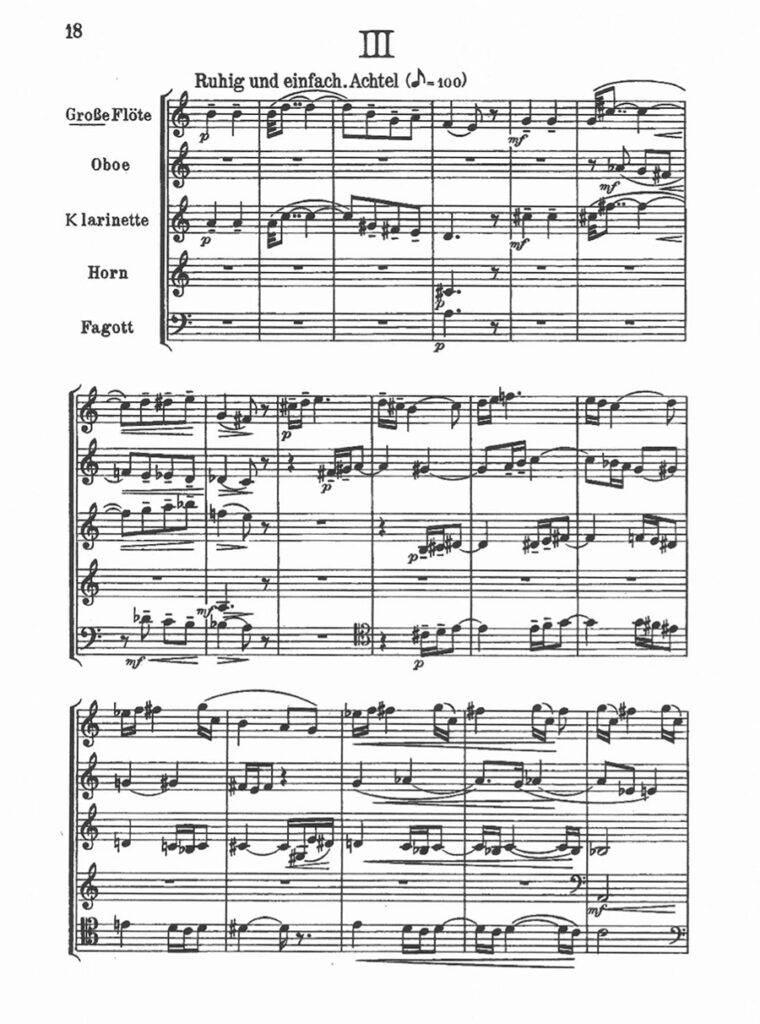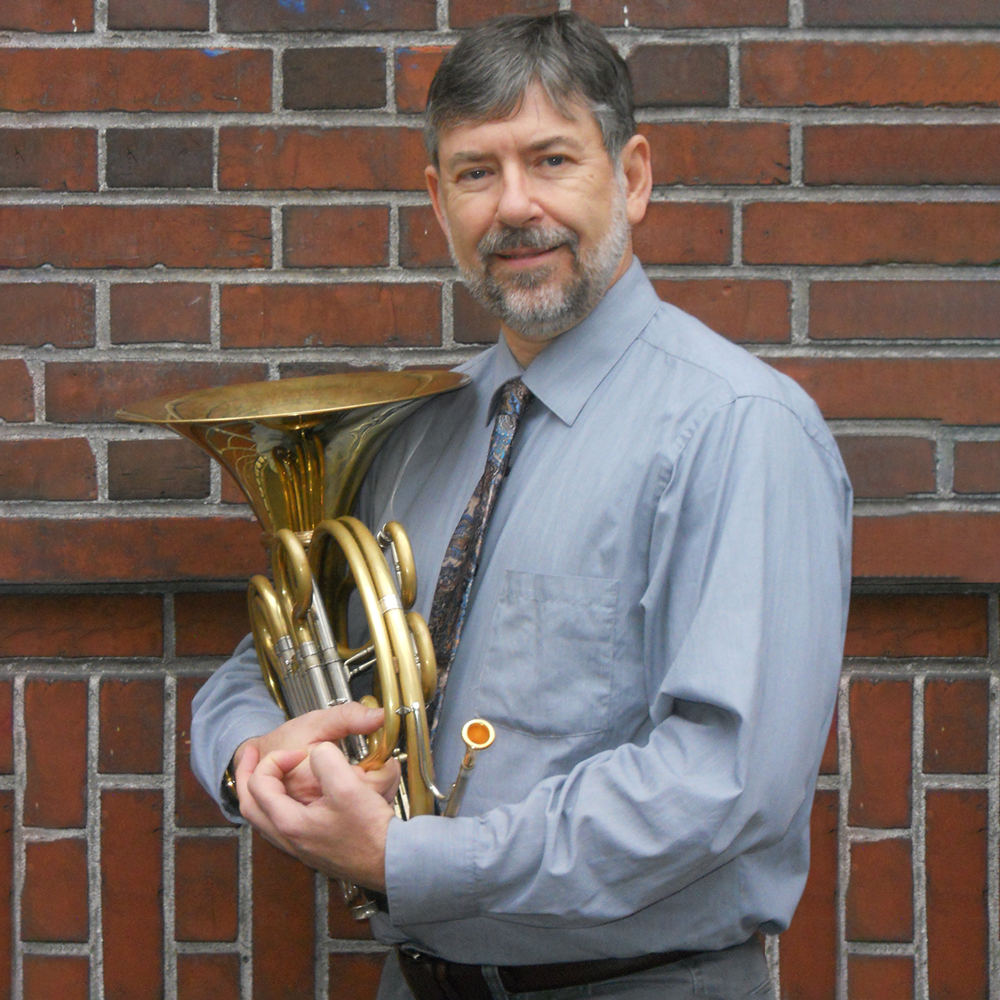Your cart is currently empty!
Chamber Music in a High School Music Band Program
Or “How I finally got to use my 45-year-old BME.”

In January 2023, four months into assisting the band program, I arrived at school expecting a routine day of coaching a woodwind quintet for their district contest, as requested by the band director, Gary Riler. Little did I know, my role would soon evolve in ways that made it all worthwhile. After retiring and recovering from Covid in 2022, I became a contractor for Portland Public Schools, helping with the horn section at Cleveland High School. My simple job was to support the bands, but working alongside Gary, a dedicated and hardworking teacher, has been an honor.
Gary’s approach prioritizes being there for his students, then leading the band program, and finally directing the band itself. He creates a safe and inclusive environment for everyone. To manage it all, he relies on outside coaches like me, along with flute, clarinet, trumpet, trombone, and low brass coaches. We work with students in small groups or play alongside them during rehearsals, helping where we can.
The Structure of the Band Program and Gary’s Support System
Like most relatively large high schools, the fall and winter months are pep band months. A great co-mingling of disciplines and school spirit. Equally important, it keeps students playing and performing regularly and maintains the band on the school administration’s radar for its significance and contribution to the school. Gary intermixes the bands – a great way to combine students of differing levels of ability and students are assigned to either the Green Band or Gold Band, these being the school colors. For games using the ‘Green’ band, those students are required to play. Same for ‘Gold’. And students can swap if they have conflicts, provided each fulfills a minimum number of games for grade consideration.
During Solo and Ensemble season, on the first day back from the holidays, Gary asked me to work with a woodwind quintet from the Wind Ensemble instead of just the horns. “Glad to,” I said, and we moved to a smaller room where I could offer feedback. Gary strongly believes chamber music improves individual skills and the overall band, encouraging students to form and compete in small groups each winter. I’m fortunate to work with him, sharing his belief in the value of chamber music for students.
Transitioning to Chamber Music Coaching
The Portland Interscholastic League (PIL), requires students to perform up to ten minutes of material appropriate for the level of competition into which they are entered. In the top level, the quintet had been working on two movements of the Paul Hindemith ‘Kleine Kammermusik, Opus 24 No. 2’. Specifically, the 1st (Lustig) and 3rd (Ruhig und Einfach) movements1.
They started out with the ‘Ruhig und Einfach’, playing through it. And they sounded pretty good. Technique was no problem for any of them. And basic concepts of how the piece went were in place.
These were good students, especially the double reeds—Gary is blessed by having really good double reeds in his program. Getting excited with their possibilities, I wondered firstly how amenable these folks would be to being coached and then how far to take that coaching.
Initial Work with the Woodwind Quintet
I received excellent chamber music training at the University of Evansville with David Wright and at Boston University with members of the Boston Symphony, including Ralph Gomberg, David Ohanian, Norman Bolter, and Rolf Smedvig—renowned orchestral and chamber musicians who were incredibly demanding. Over the years, I’ve also performed chamber music with colleagues from the Oregon Symphony, Chamber Music Northwest, the Mainly Mozart Festival, and as the hornist in the Westwood Woodwind Quintet. I’ve gained significant experience along the way. With this background, I went to work. And so did the students.
We started in earnest, me believing we would have about 30 minutes of the period to do some work (periods, which work on an alternating ‘A/B’ schedule, are about 90 minutes long). I asked them to again start the 3rd movement. We got 4 bars into it. 2

I cut them off and asked them to play it again. They did, and I cut them off again.
“You are playing the notes correctly, the tempo is okay, and the intonation is good. So, why did I stop you?” Making them think is so much better than spoon-feeding them.
Crickets. Fortunately, I could see the silence was from truly not knowing, not from disinterest.
“Okay. I have the feeling you folks really want to sound better. The thing is – you don’t know what you are listening for, why it’s important, and what to do to make it sound better. Fortunately, it’s not that hard to learn, and you are ready. Let’s start again. This time make sure your note beginnings and particularly your note endings all happen at the same time.”
It was no better than before. They repeated it, then again. Progress. I could tell that with each repeating, they started to hear what I was pointing out to them. Growth. They started getting it.
“Professional chamber groups aren’t magic. They just make it sound like it is. Fortunately, the things they do are all relatively ‘little things’. Unfortunately, there are a lot of ‘little things’ and you first have to know what they are and secondly plan to use them consciously.
“You can do this. Let’s start by learning a few of the little things. Then incorporate those into your playing, be able to do it repeatedly, and especially the first time through when you rehearse again.”
Expanding Coaching to Additional Chamber Groups
By the end of the half-hour, they had learned the importance of starting and stopping notes together. And, with these first few bars, we also worked on making sure the note beginnings, the ‘attacks’, were all the same.
“Dynamics aren’t just ‘dynamics’, not just how soft or how loud. Part of the dynamic quality is timbre, and that starts with the beginning of the note. Let’s try something: Flute, please start your notes with a hard sound. Clarinet, please start your notes with a soft sound. And both play the same piano dynamic. And don’t forget to start and release the notes together.”
They got it and heard what I was asking for the first time. I then asked them both to play with piano attacks AND piano dynamics, to play the first four bars, and for the horn and bassoon to play likewise, making sure to hold the notes full length in the fourth bar and cut off together. They were amazed by the difference it made in how the group sounded. And everything was within their grasp technically. An hour later, they left feeling like they had really accomplished something and feeling that they wanted to work at that level again.
Two things happened in that session. They gained confidence in the reality that they really could sound better (and that there’s nothing wrong with sounding better than other groups), and they also started to develop a hunger to do better with each rehearsal toward an end result.
Preparing for and Competing in the PIL
When Gary and I spoke at the end of the day, I told him I wanted to work again with this group. “There’s something really special that’s possible with them.” “Good,” he said. “I think this group might do well at district.” “Good.” Again. In spite of a mild demeanor, Gary has a bit of competitiveness in him. Plus, he wants his students to do well to reap the rewards of doing well.
“Any limits on what I do with them?” I asked.
“Nope.”
I want to note here that I believe it’s important that anyone you are working for and under knows you are there only to complement what they are trying to do, not to ‘upstage’ them. Communication as to expectations and methods to reach those expectations are key to avoiding potential misunderstandings later. The students especially need to feel that hierarchy. And I truly know I’m not ‘band director’ material – I’m hired in for my specialty abilities, not comparisons.
It wasn’t long until I began working with other chamber groups as well. A second, much more junior woodwind quintet, brass groups, woodwind groups, including a saxophone group. Naturally, I crafted what I taught to the level each group could handle, and then I pushed each a bit3.
With the efforts to help the groups do as well as possible to truly feel READY for competition, I began showing up every week, then several times a week.
It’s what you do.
With the top woodwind quintet, the ensemble things became easy – then we started working on which notes of phrases would be emphasized. Determining if everyone’s dynamic is truly equal. Making sure that, like a good golf swing, the run-throughs were repeatable with the same level of delivery, rehearsal to rehearsal. Researching the composers, the times in which they lived, and why they wrote what they did, how they did it. We even worked on showmanship.
I never bothered to tell the quintet that they were learning graduate school level material and performance practices. Or that they were, by contest time, performing at a graduate school level.
Celebrating Successes and the Band’s Impact on the School
I was proud of how each group performed at the PIL competition. Each delivered very creditable performances, and Cleveland took home quite a few top spots. Even having one of my private students, a sophomore horn player, take home 1st place in the PIL.
As for the quintet? Walking out of the adjudication room, Gary asked me if I had observed the judge during their performance.
“No. What did he do?”
“He put down his pencil and stopped writing.”
The quintet handily took first place in the PIL district competition.
The quintet went on to take first place in State competition 6 weeks later.
3 judges.
It was the first 1st Place-in-State anything that Cleveland had won in many, many moons. The entire band program celebrated that win, and counting the other awards, the wins. They all felt proud to be a part of the success. Seeing all the kids react positively, seeing that their friends could do it, and then developing a hunger themselves for next year, made it all worth it.
Gary took the 1st Place State trophy, and the other trophies other ensembles had won, and put them in the main office on the entrance counter. Where everyone coming and going could see them, and the office staff could relish showing them off to visitors. For two weeks. He had the good taste not to illuminate them with spotlights.
- ‘Lustig – merrily, cheerfully, gayly. Ruhig und Einfach – quiet and simple ↩︎
- Movement 3 ‘Ruhig und einfach’ of Hindemith ‘Kleine Kammermusik Op. 24 No. 2′ ↩︎
- With groups of differing age and ability levels, we selected music appropriate to each level. Also important was selecting music they liked. Repertoire varied from the Hindemith quintet to Mancini’s “Pink Panther Theme”. I’ll admit I was a bit surprised when I played a Pink Panther cartoon on YouTube for them (as classroom research) and discovered that a couple of them had never watched Pink Panther cartoons before. ↩︎

John Cox is the former Principal Horn of the Oregon Symphony. He is a long-time member of the Mainly Mozart Festival orchestra in San Diego, a frequent performer with Chamber Music Northwest, has been a faculty member of the Barry Tuckwell Institute, and has lectured at numerous IHS workshops, most recently in London. John also works in creative consulting with the Oregon Symphony in community relationship building and partnering with new audiences in underserved venues. He records as solo horn with the Oregon Symphony and as hornist with the Westwood Woodwind Quintet.